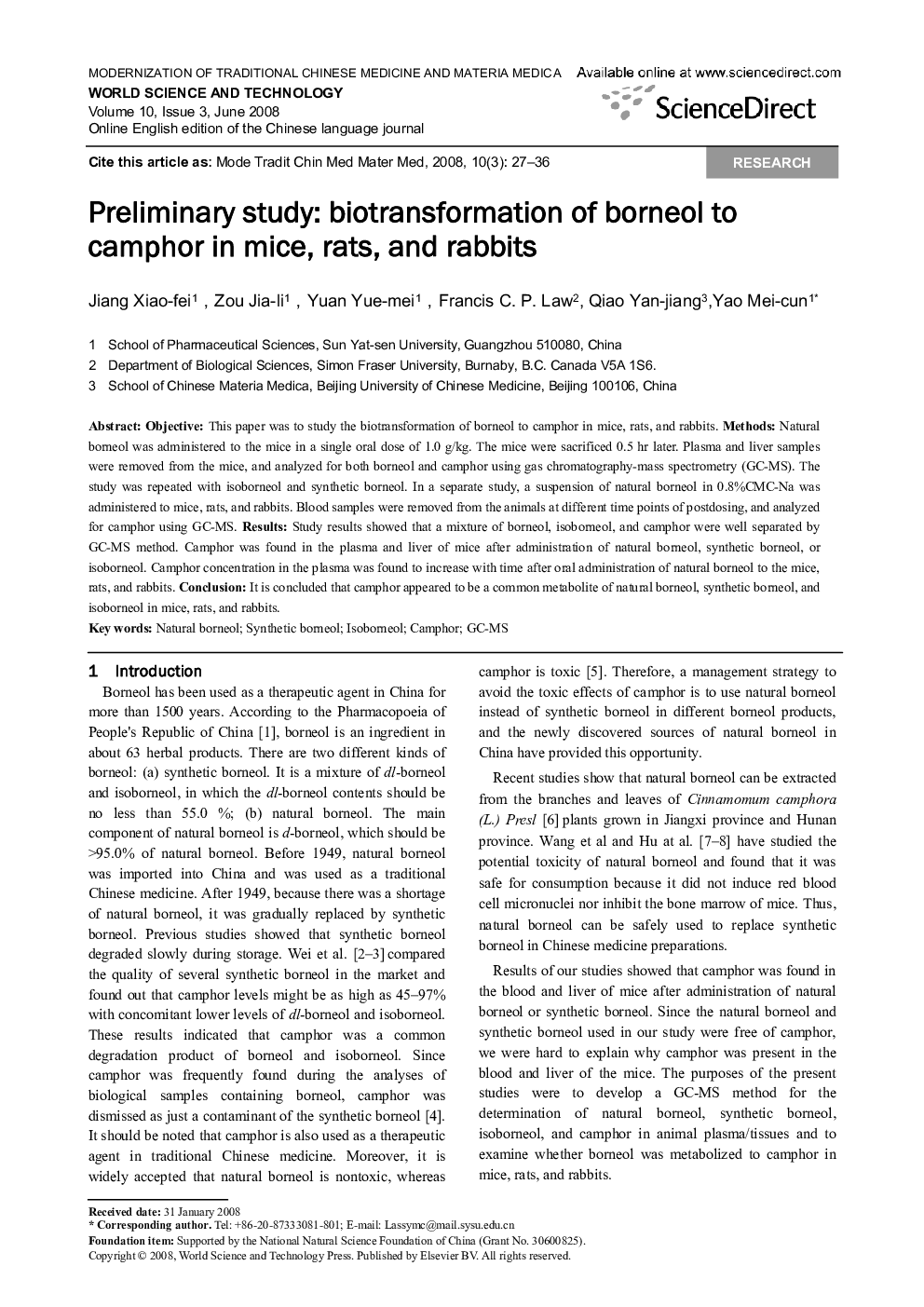| Article ID | Journal | Published Year | Pages | File Type |
|---|---|---|---|---|
| 2575496 | World Science and Technology | 2008 | 10 Pages |
ObjectiveThis paper was to study the biotransformation of borneol to camphor in mice, rats, and rabbits.MethodsNatural borneol was administered to the mice in a single oral dose of 1.0 g/kg. The mice were sacrificed 0.5 hr later. Plasma and liver samples were removed from the mice, and analyzed for both borneol and camphor using gas chromatography-mass spectrometry (GC-MS). The study was repeated with isoborneol and synthetic borneol. In a separate study, a suspension of natural borneol in 0.8%CMC-Na was administered to mice, rats, and rabbits. Blood samples were removed from the animals at different time points of postdosing, and analyzed for camphor using GC-MS.ResultsStudy results showed that a mixture of borneol, isoborneol, and camphor were well separated by GC-MS method. Camphor was found in the plasma and liver of mice after administration of natural borneol, synthetic borneol, or isoborneol. Camphor concentration in the plasma was found to increase with time after oral administration of natural borneol to the mice, rats, and rabbits.ConclusionIt is concluded that camphor appeared to be a common metabolite of natural borneol, synthetic borneol, and isoborneol in mice, rats, and rabbits.
